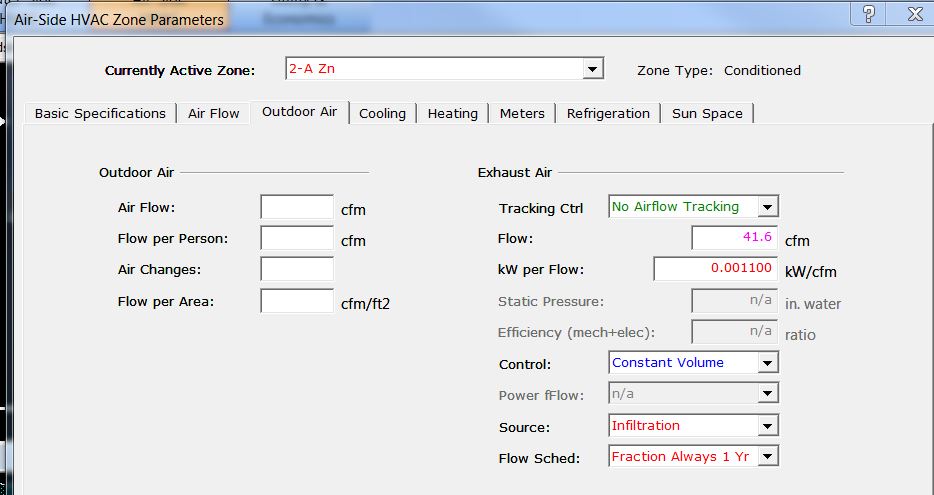Modeling exhaust fans in eQuest
Prelimininary Findings
I've read all relevant eQuest-user threads, and started my own here, and got extremely useful feedback.
It seems that the consensus is indeed to model bathroom and kitchen exhaust as a zonal exhaust, such as the following:

As you can see, I'm setting a flow (CFM) and a corresponding kW/CFM for the fan power. I'm setting the control as Constant Volume in my case, with a flow schedule that is always one.
The EXHAUST-SOURCE is set to "Infiltration", meaning that the make-up air comes from infiltration through the facade (which is the case for apartments without mechanical supply of air, such as apartments with trickle vents).
From eQuest help for the "EXHAUST-SOURCE" keyword:
INFILTRATION
specifies that the EXHAUST-FLOW is made up via outdoor air infiltrating directly into the zone. The exhaust fan operates independently of the space conditioning system, and the exhaust requirement is not included in the calculations of outdoor air flows or VAV minimum terminal flows. The EXHAUST-FAN-SCH must be specified.
A common usage for this mode is to model residential exhaust requirements for bathrooms and kitchens.
When the exhaust fan operates, zonal air infiltration is modified by adding the infiltration and exhaust flows in quadrature:
Net infiltration = [ (Infiltration Flow)2 + (Exhaust Flow)2 ]1/2
How does eQuest account for this: further problems
As seen previously, it seems that the actual net infiltration through the wall is combined in quadrature (square root of the squares) between infiltration flow defined under "SPACE" and the Exhaust Flow.
Yet, I found out that I had low heating consumption and a bunch of unmet hours after adding the zonal exhaust.
To investigate, I played on the exhaust air:
- I increased the outside air on certain zones and compared the SIM file
- I moved the outside air from Zonal Exhaust to Outside air flow and compared the SIM file once again
On the following screenshot: On the left, "Exhaust Air" column, I set it as a zonal exhaust fan (like the picture above, except it's 400 CFM). On the right, I've set it as Outside air flow (on the central system).

Full size picture: Click here.
I've got a good news and a bad news:
- eQuest does take into account the exhaust air when calculating the consumption (that's the good news)
- eQuest doesn't seem to take into account the exhaust air when autosizing the system! That's the bad news.
Workaround to get eQuest to autosize correctly with zonal exhaust
Since eQuest doesn't understand that it's supposed to size the system to handle the added infiltration, you need a workaround. One enlightened user on the previously mentioned mailing list suggested a smart one.
It's a little bit tedious if you have a lot of different zones with different zonal exhausts, but hopefully you won't have to repeat those steps more than 5-10 times.
The basic idea is to use a different infiltration ... (more)







